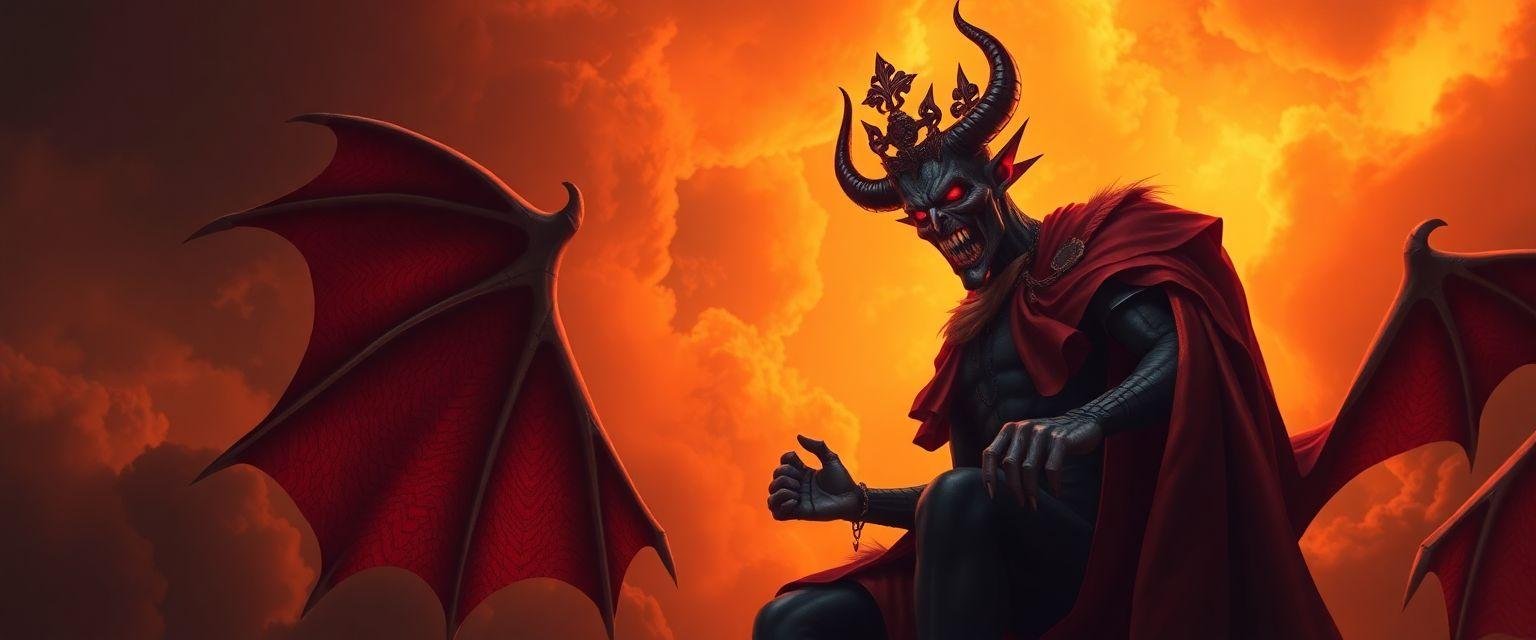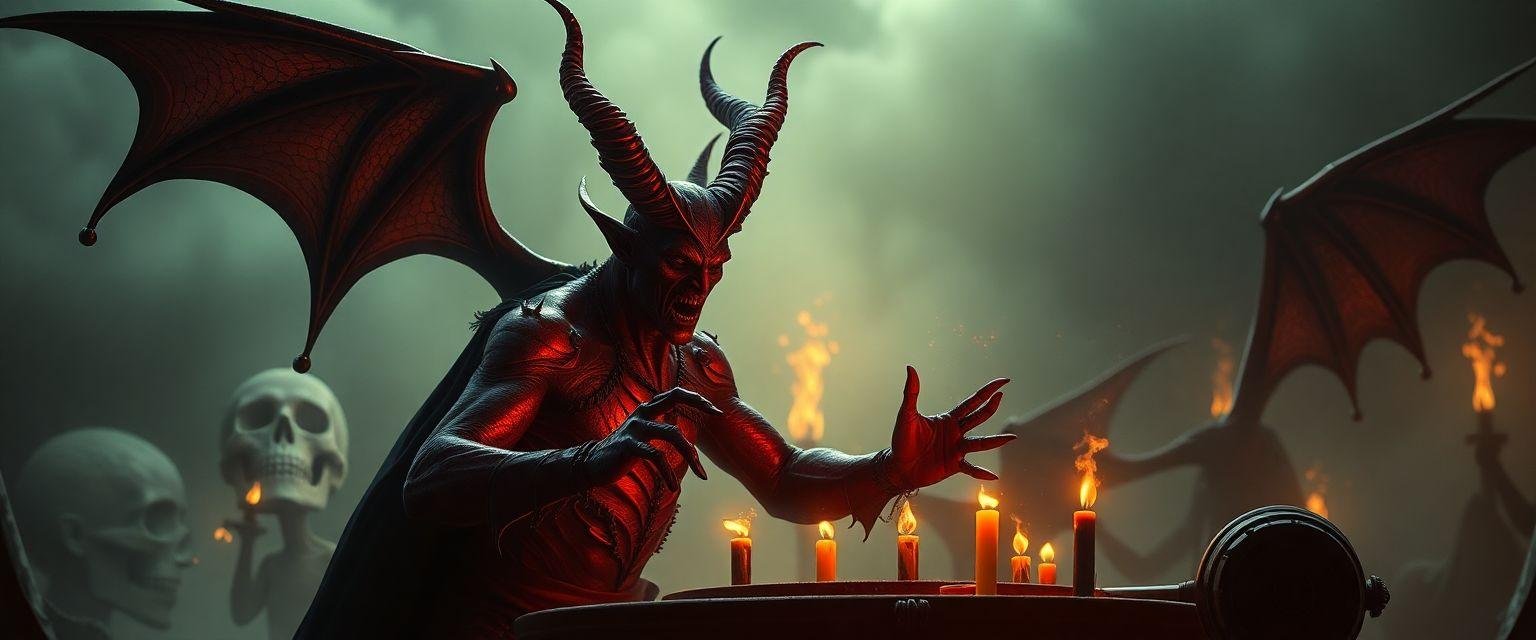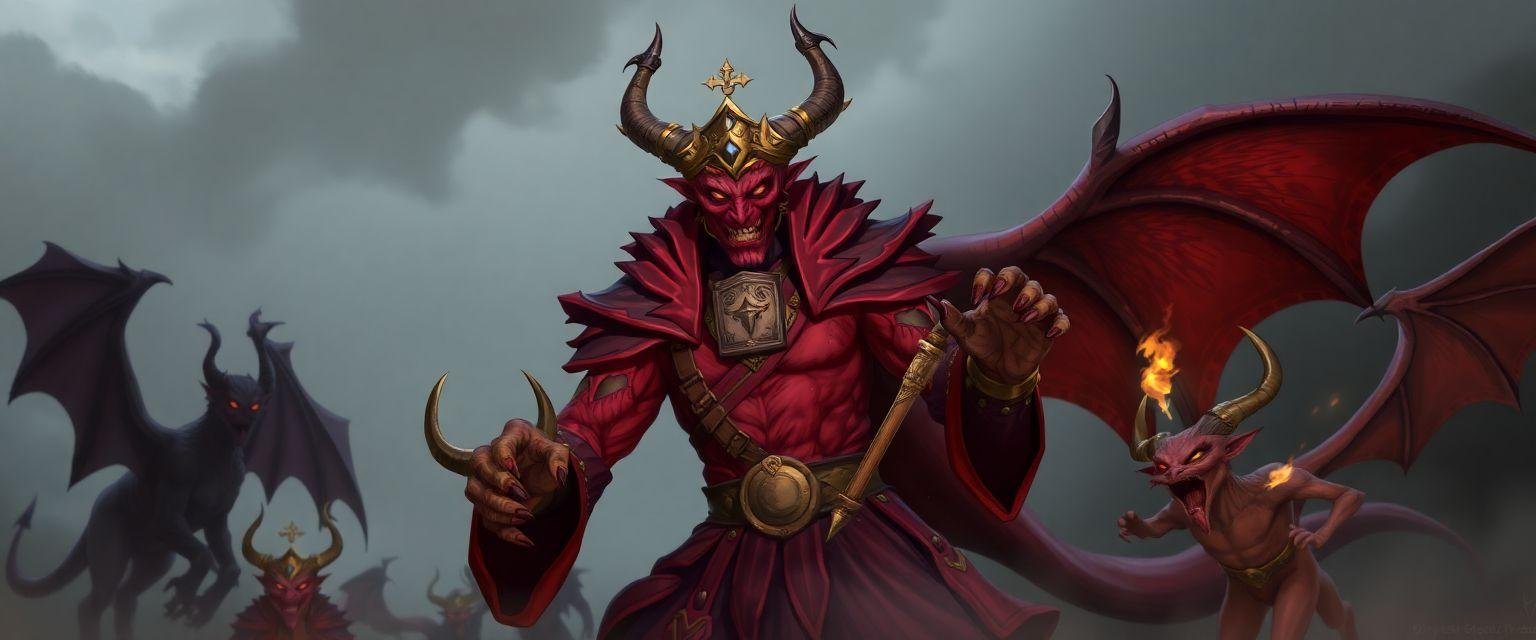The Nine Demon Ranks of Hell
What really goes on in the underworld? Have you ever wondered about the power struggles that might exist among the forces of darkness? The idea of a structured hierarchy in Hell is not just fodder for horror movies or ancient myths, but a complex system of order that many believe organizes the legions of demons. This article will explore the fascinating world of demon ranks and their roles in Hell, unraveling the mysterious layers of infernal bureaucracy. Buckle up, as we delve into the dark and fiery depths of these nine demon ranks.
Understanding Demon Ranks
Discover the hierarchy of demons and their specific roles within Hell’s structure.
– Who is at the top? The Devil is the supreme ruler of Hell, overseeing all other ranks.
– What are the main ranks? The nine ranks include Prince, Duke, Earl, Baron, Marquess, Count, Viscount, and Knight, each with distinct responsibilities.
– How do these roles function? Each rank signifies power and authority, influencing the organization and operations of Hell’s inhabitants.
The Nine Demon Ranks of Hell
The hierarchy of Hell is a topic that has intrigued theologians, historians, and storytellers alike for centuries. It’s a structure that supposedly mirrors the aristocratic systems found in the human world, but with a sinister twist. This hierarchy helps to maintain order among the demonic forces and defines the roles and authorities of each rank. From fearsome leaders to cunning followers, each rank plays a crucial role in the nefarious workings of Hell.

1. The Devil
At the top of the infernal food chain sits the Devil, the ultimate ruler of Hell. Often referred to as Satan or Lucifer, the Devil is the most powerful and feared entity in the underworld. Some stories depict the Devil as a fallen angel who was cast out of Heaven due to his pride and desire to rival God. His role is not only to rule over Hell but also to tempt humans into sinning and turning away from the path of righteousness.
The Devil’s influence is felt both in Hell and on Earth. Many believe that he uses his immense power to control other demons, orchestrating their actions to achieve his malevolent goals. An interesting question to consider is: Can the Devil ever be overthrown, or is his position eternally secure?
2. Prince
Beneath the Devil are the Princes of Hell, each commanding significant authority and power. Princes are considered second-in-command, overseeing large regions of Hell and managing legions of lesser demons. These princes, like Beelzebub and Asmodeus, are often associated with specific sins or vices.

In many tales, Princes serve as the Devil’s right-hand beings, executing his commands and maintaining the infernal order. Their power is immense, and they are often depicted as master strategists, cunning and ruthless. One might ponder, do these Princes ever harbor ambitions of usurping the Devil, or is their loyalty unwavering?
3. Duke
Next in the hierarchy are the Dukes of Hell. These demons hold significant power and are often responsible for executing large-scale operations, such as orchestrating wars or spreading plagues. Dukes are highly respected among the demon ranks and are known for their intelligence and strategic acumen.
In literature and mythology, Dukes often serve as the generals of Hell’s armies, leading their forces into battle against the forces of good. With their sharp minds and commanding presence, Dukes are essential to the function and success of Hell’s operations. But what happens when a Duke falls out of favor? Is there a chance for redemption or a risk of demotion?
4. Earl
Earls are mid-ranking demons who serve as advisors and overseers within the infernal hierarchy. They are often tasked with managing specific aspects of Hell’s operations, such as overseeing the torture of souls or managing the flow of damned spirits.

Though their power is not as great as that of Dukes or Princes, Earls are nonetheless influential figures within the demonic hierarchy. Their ability to advise higher-ranking demons and ensure the smooth operation of Hell’s bureaucracy is crucial to maintaining order in the underworld.
5. Baron
Barons are lower-ranking demons tasked with overseeing smaller regions or specific tasks within Hell. They are often responsible for managing lesser demons and ensuring that their duties are carried out efficiently. While their power is limited compared to higher-ranking demons, Barons are vital to the functioning of Hell’s complex system.
These demons often serve as intermediaries between the higher-ranking demons and the lower ranks, ensuring that orders are executed and problems are addressed. Barons are known for their loyalty and dedication, but what happens when a Baron is found lacking? Is there room for upward mobility, or are they doomed to remain in their current rank?
6. Marquess
The Marquess rank is an intriguing one within the demonic hierarchy. These demons often serve as diplomats or emissaries, representing Hell’s interests in interactions with other realms or entities. They possess a unique blend of charm and cunning, making them adept at negotiation and manipulation.

In many stories, Marquesses are portrayed as suave and persuasive, able to sway others to their cause with ease. Their ability to navigate complex political landscapes makes them invaluable to the demon ranks. However, one might wonder, do they ever encounter conflicts of interest, or are they solely loyal to Hell’s agenda?
7. Count
Counts are responsible for overseeing specific domains within Hell, often managing the day-to-day operations and ensuring that everything runs smoothly. They possess a keen eye for detail and are adept at problem-solving, making them essential to the hierarchy’s efficiency.
Though not as powerful as higher-ranking demons, Counts play a crucial role in maintaining order and addressing any issues that arise. Their ability to adapt to changing circumstances and find solutions to problems makes them valuable assets to the infernal hierarchy.
8. Viscount
Viscounts are lower-ranking demons who assist in the management and administration of Hell’s operations. They are often responsible for carrying out specific tasks or overseeing small groups of lesser demons. Though their power is limited, their role is essential to maintaining the smooth functioning of Hell’s bureaucracy.

Viscounts are known for their diligence and attention to detail, ensuring that orders are executed and tasks are completed efficiently. While their influence may be limited, their contributions are vital to the success of Hell’s operations.
9. Knight
Knights are the foot soldiers of Hell, tasked with carrying out the orders of higher-ranking demons and enforcing the infernal hierarchy’s will. They are often depicted as fierce warriors, skilled in combat and loyal to their superiors.

Though their power is limited compared to higher-ranking demons, Knights play a crucial role in executing the orders of their superiors and maintaining order within Hell’s ranks. Their dedication and loyalty make them valuable assets to the infernal hierarchy.
Conclusion
The hierarchy of Hell is a complex and intriguing system, with each rank playing a crucial role in maintaining order and carrying out the infernal agenda. From the mighty Devil to the loyal Knights, each demon rank possesses unique abilities and responsibilities that contribute to the success of Hell’s operations.
As we’ve explored the nine demon ranks of Hell, it’s clear that this structure mirrors the aristocratic systems found in the human world, albeit with a dark and sinister twist. Whether through diplomacy, warfare, or administration, each rank plays a vital role in the nefarious workings of the underworld. So, the next time you find yourself pondering the mysteries of the infernal hierarchy, consider the power dynamics and intricate relationships that define this dark and fascinating realm.
For more intriguing explorations of the supernatural, visit Thin White Lies.
Answers To Common Questions
What are the different ranks of demons in Hell?
Demons in Hell are typically classified into various ranks, such as princes, counts, and foot soldiers.
Who are the highest-ranking demons in Hell?
The highest-ranking demons include powerful figures like Lucifer and Beelzebub, who lead other demons.
How do demon ranks affect their roles in Hell?
Each rank determines a demon’s authority, responsibilities, and the power they wield over souls.
What roles do lesser demons play in the hierarchy of Hell?
Lesser demons often serve as minions, executing tasks assigned by higher-ranking demons.
Are demon ranks based on mythology or religious texts?
Yes, demon ranks often derive from various mythologies and religious texts throughout history.
What if I dont believe in the concept of demons?
Even if one doesn’t believe, studying demon ranks can offer insights into cultural folklore and beliefs.







